Analyzing USDT Token with Bitquery’s Explorer and API
 Degen HODLer
Degen HODLerTable of contents
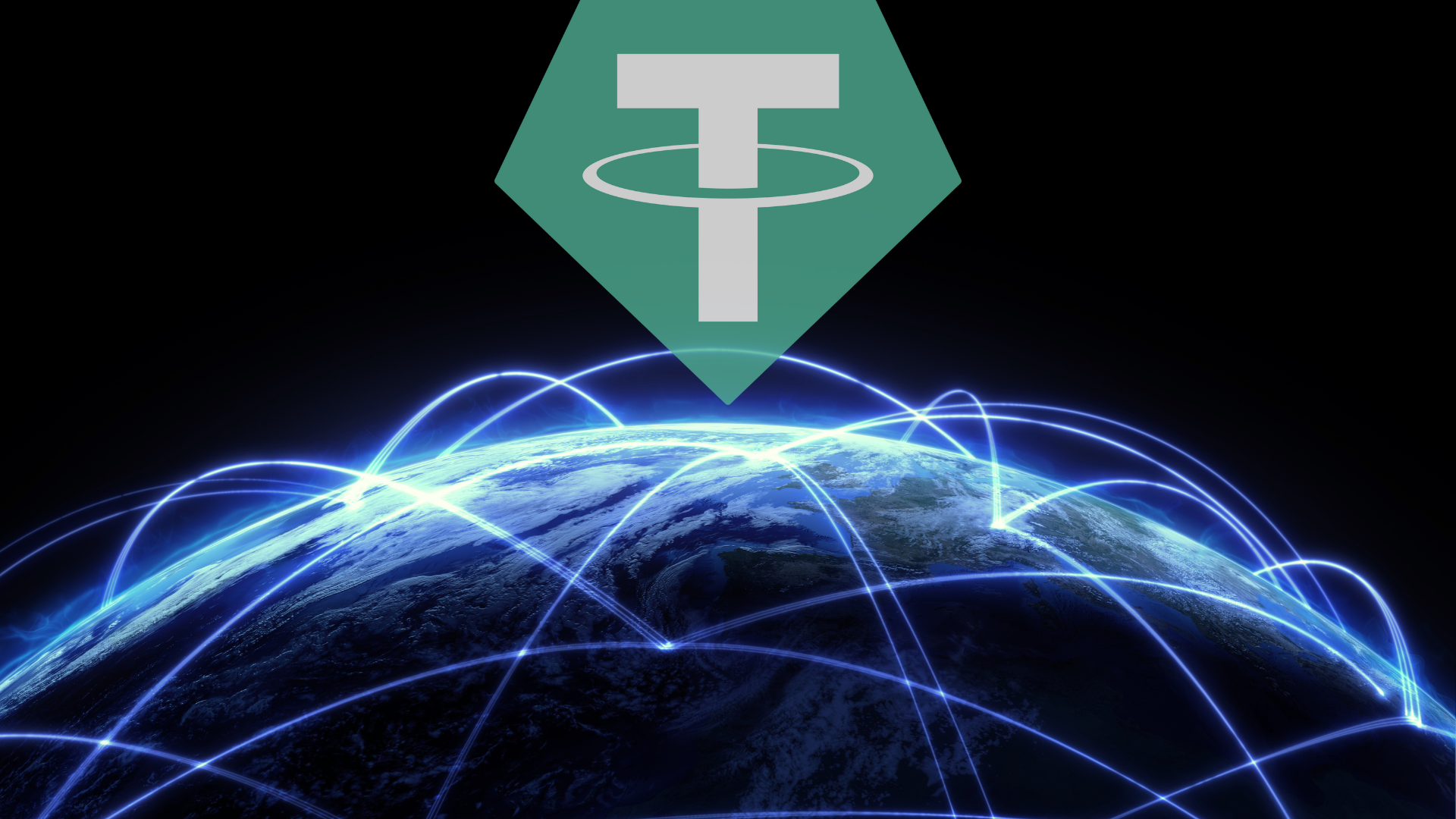
Blockchain technology is the foundational system underpinning various cryptocurrencies, including Tether (USDT). DeFi, a financial ecosystem on the blockchain, relies on USDT for stability and has wide acceptance in decentralized platforms.
USDT Token is a type of stablecoin, a digital cryptocurrency that aims to maintain a stable value by pegging it to a fiat currency i.e. US Dollar for USDT. It is one of the most popular and widely used stablecoins with TVL (total value locked) of over $6.5 Billion. The stable value of USDT is maintained through regular audits and backing by a reserve of US Dollars. Tether Limited is the company behind USDT, and they claim to maintain a 1:1 peg with the US Dollar.
In this article, we'll analyze USDT Token using Bitquery's Explorer and token APIs, and how you can leverage their capabilities for integrating with your decentralized applications.
You can find more information about Bitquery APIs and USDT API Doc Here.

Bitquery Explorer
The Bitquery Explorer is a user-friendly interface that allows us to explore blockchain data. We can search for transactions, addresses, tokens, and more
To analyze the USDT Token using the Bitquery Explorer, we can start by entering the token’s contract address into the search bar. This will provide us with a wealth of information, including token holders, transfers, transactions, and more
If we enter the USDT Token contract address on the Ethereum
------> 0xdac17f958d2ee523a2206206994597c13d831ec7
we can see the following information:
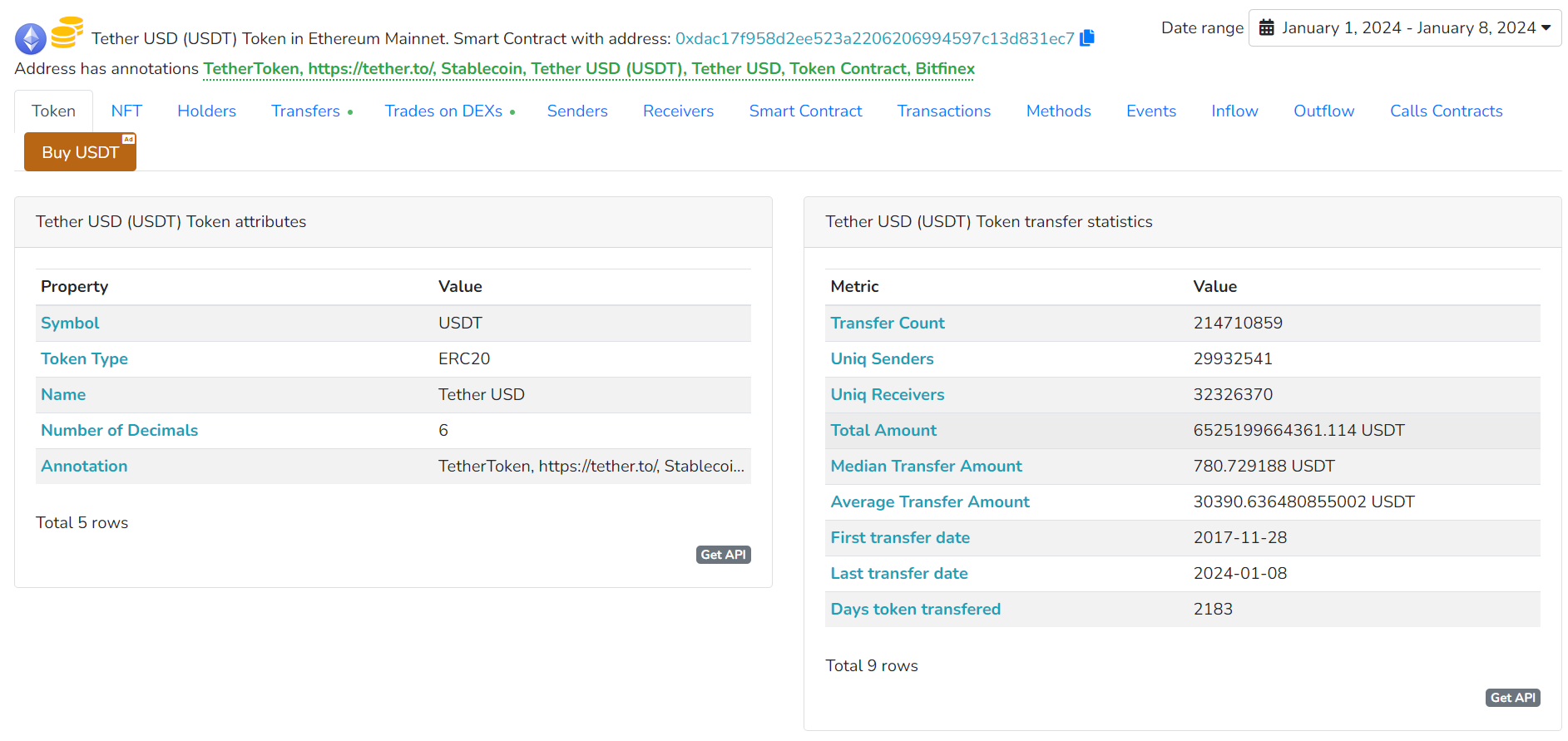
You can see that USDT has great volume and also token activity. You can integrate this data using Bitquery API into your application.
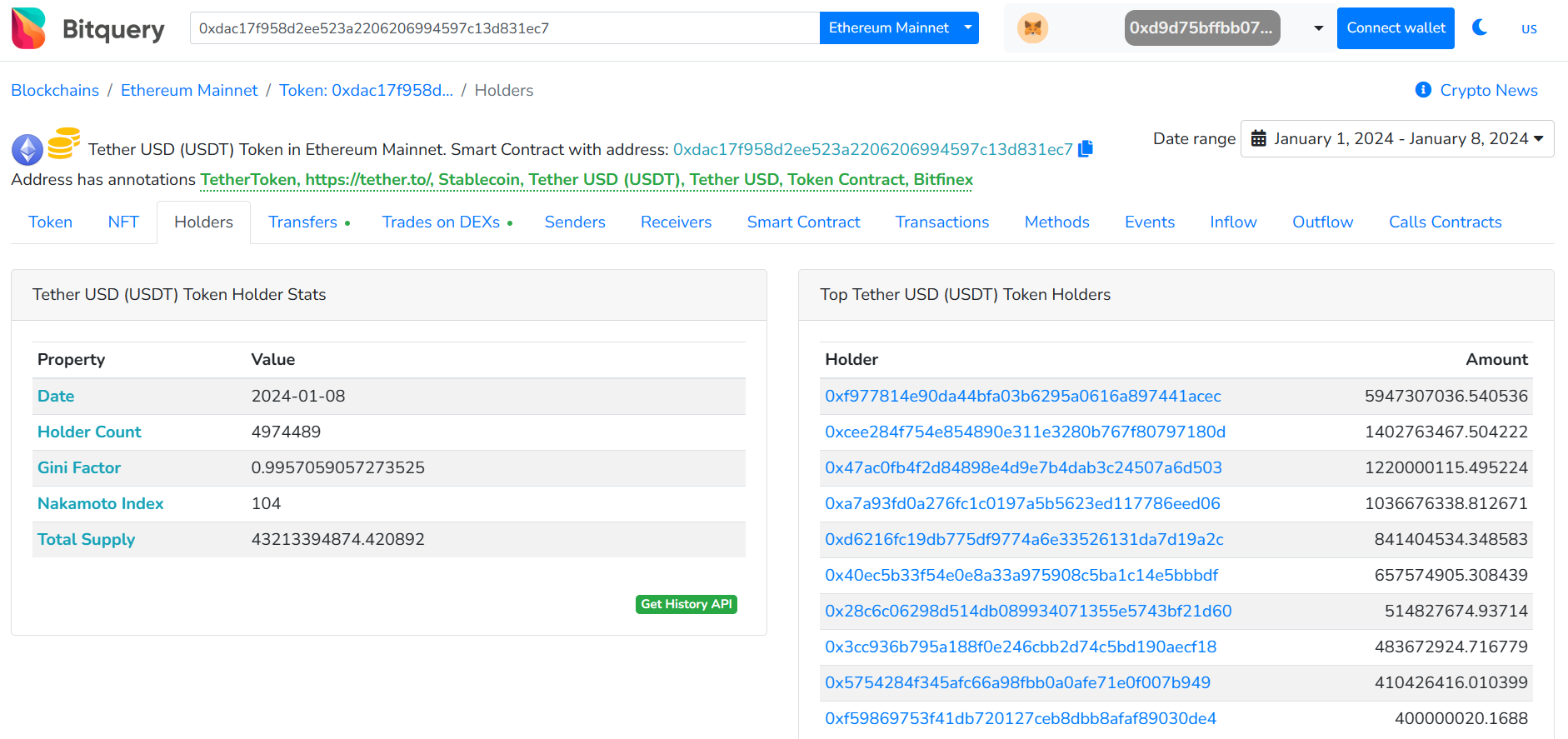
This data shows us the concentration of USDT in particular addresses. Also, we can see holder counts and various factors to predict token price stability and dependence.
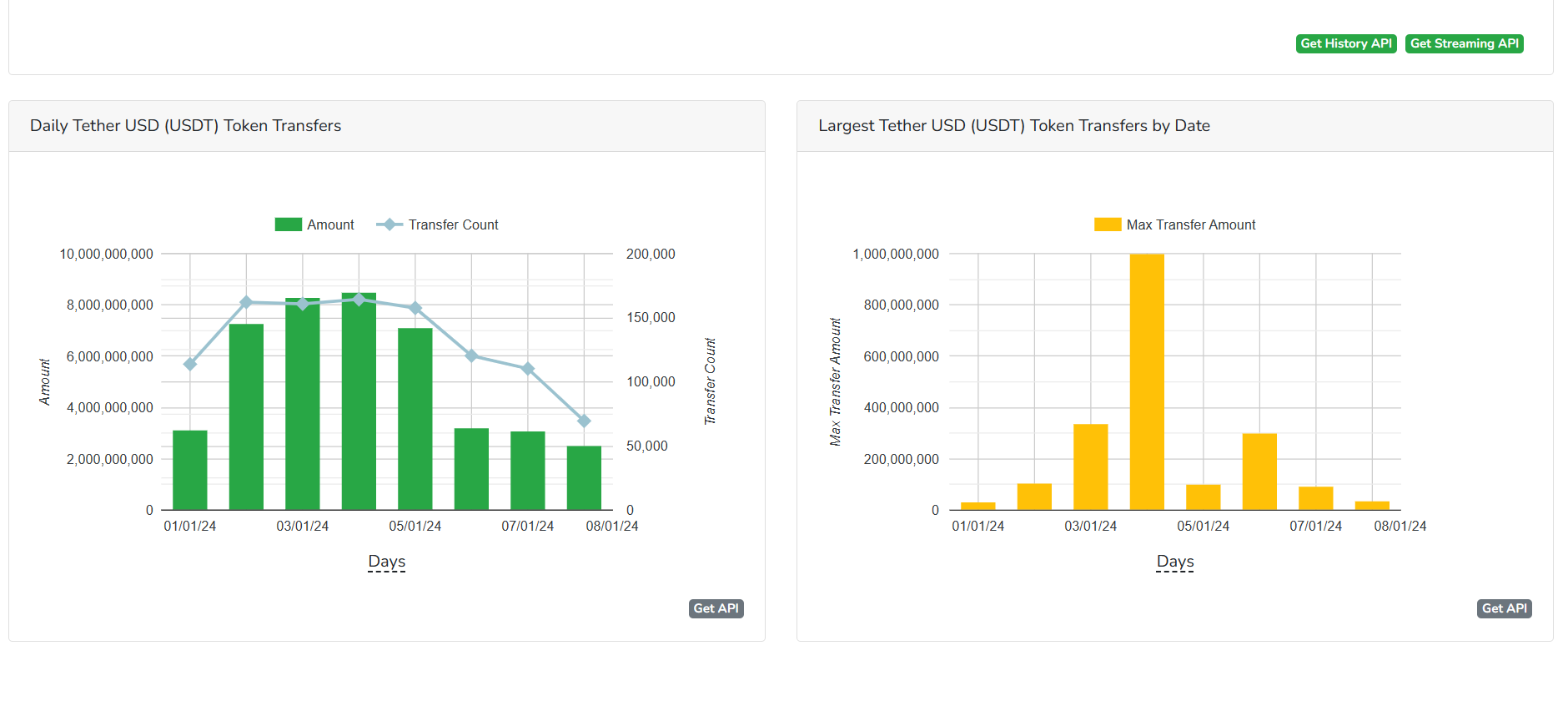
we can see here the transfer data of USDT token on Ethereum Mainnet. Here we can see there was a huge pump in the chart, we can predict market volume by notifying this trend.
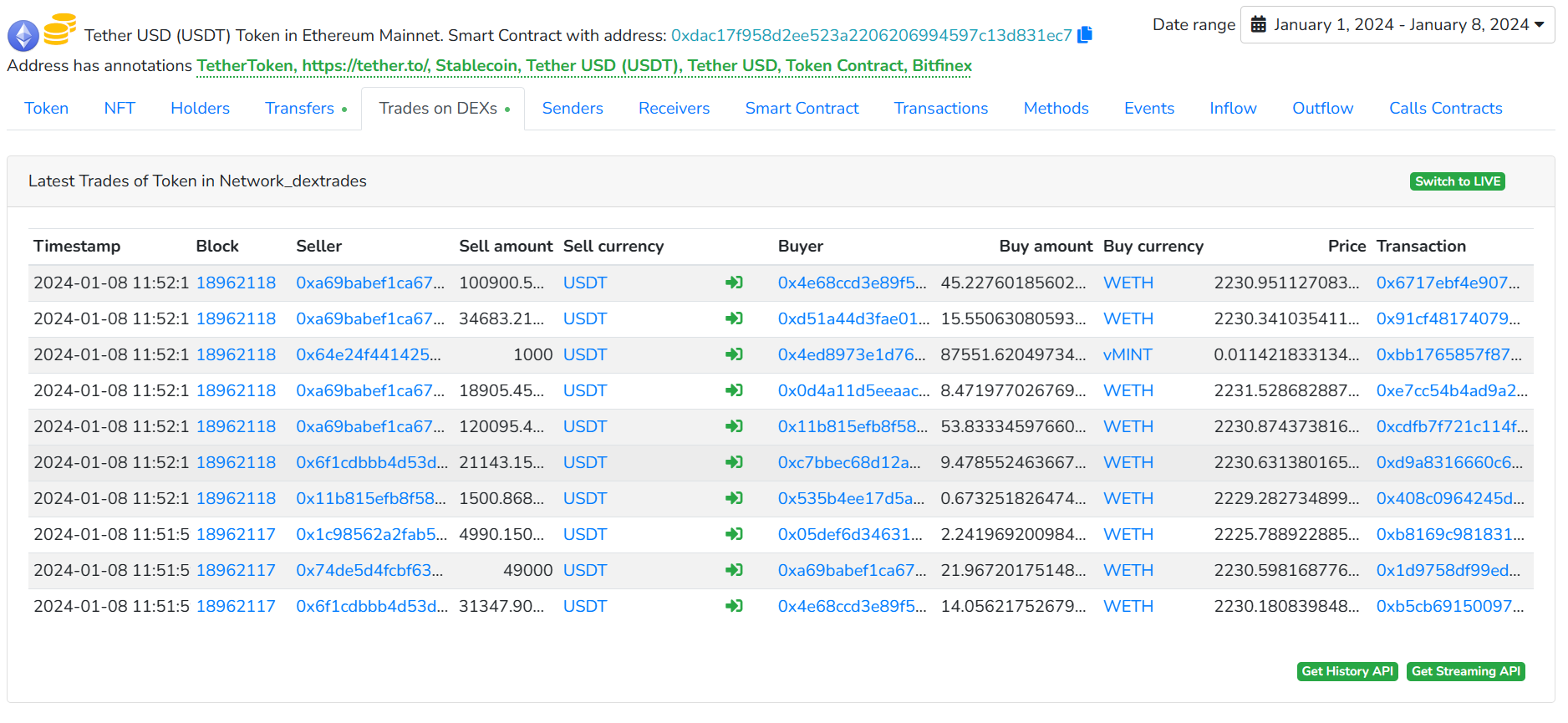
Here you can see the token trades, it is very useful to see any sudden changes if big trades are happening around (Any Token Pair --- USDT )
We can filter the data by time range, blockchain, protocol, exchange, token analytics, and metrics, such as volume, fees, and liquidity. It makes analyzing any token very easy. This data is very useful for analyzing demand and setting trading strategies. You can also use this data using Bitquery APIs in your application.
Click the GET API tab, it will redirect you to Bitquery IDE where you can simulate that exact query to interact with and also can integrate it into your applications.
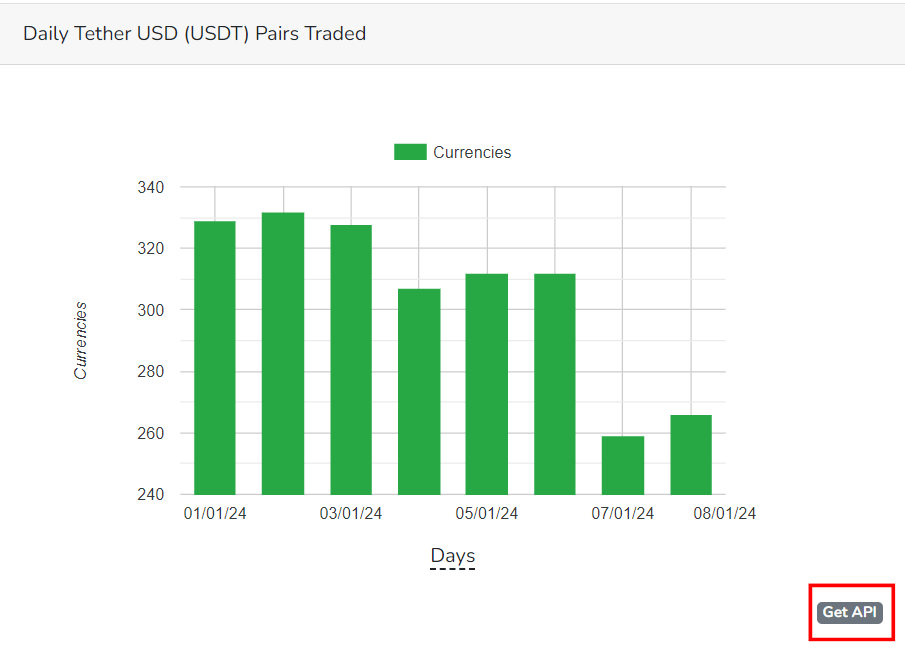

Bitquery API
For more advanced analysis, we can use the Bitquery API. This allows us to make custom queries to retrieve specific data.
To use the Bitquery API, we’ll need to send a POST request with a GraphQL query. The query should specify the blockchain and the type of data we’re interested in.
Here’s an example of a query that returns the token details of the USDT Token contract address on Ethereum: simulate this in IDE
{ ethereum(network: ethereum) { address(address: {is: "0xdac17f958d2ee523a2206206994597c13d831ec7"}) { address smartContract { contractType currency { symbol name decimals tokenType } } } } }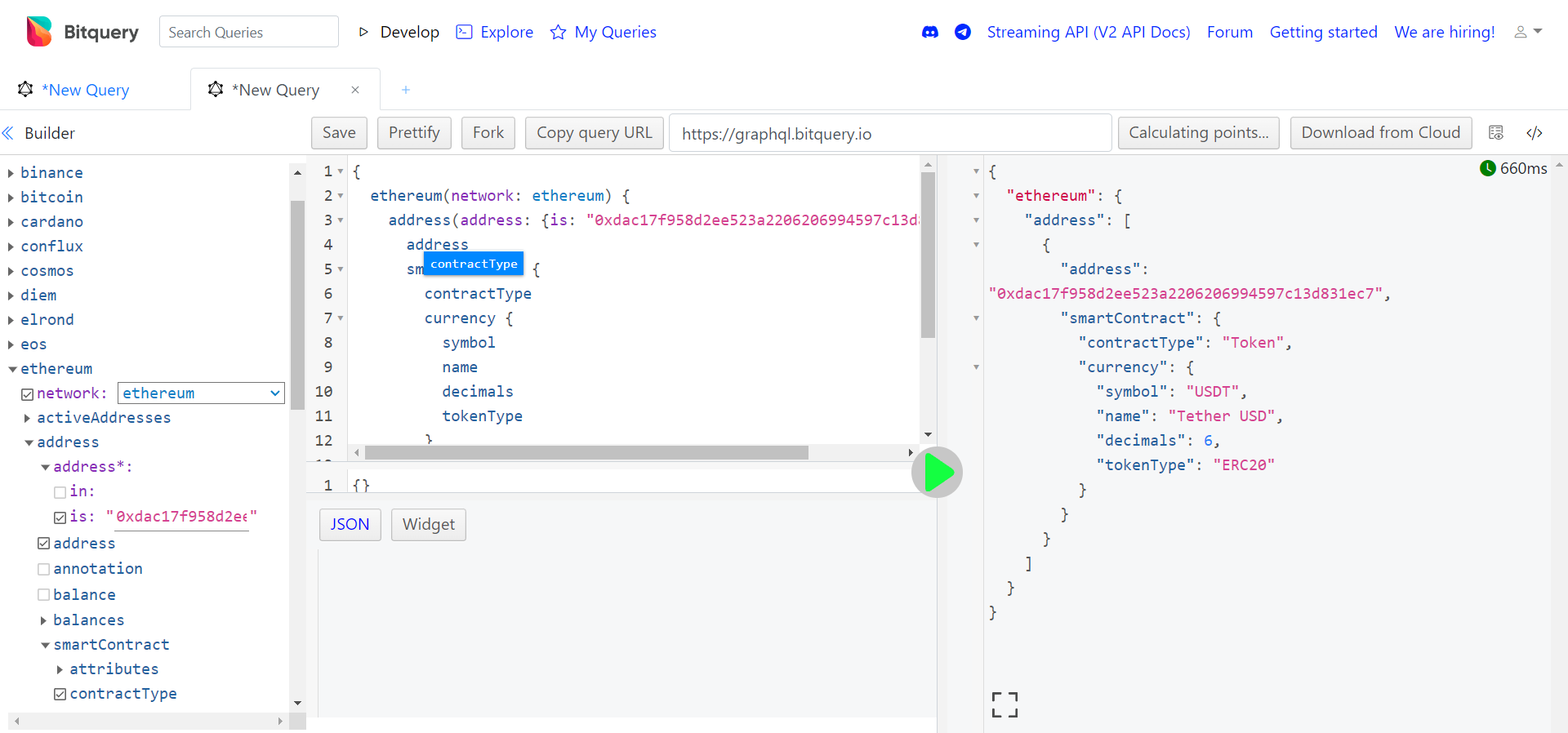
- Let’s see on which DeX USDT is traded most, using Bitquery API we can analyze it very easily. Enter the following query in IDE -->
{
ethereum(network: ethereum) {
dexTrades(
options: {desc: "amount"}
date: {since:"2017-11-28" , till: "2024-01-08"}
baseCurrency: {is: "0xdac17f958d2ee523a2206206994597c13d831ec7"}
) {
exchange {
fullName
}
trades: count
takers: count(uniq: takers)
makers: count(uniq: makers)
amount: baseAmount
baseCurrency {
symbol
}
amount_usd: baseAmount(in: USD)
currency: baseCurrency {
symbol
}
}
}
}
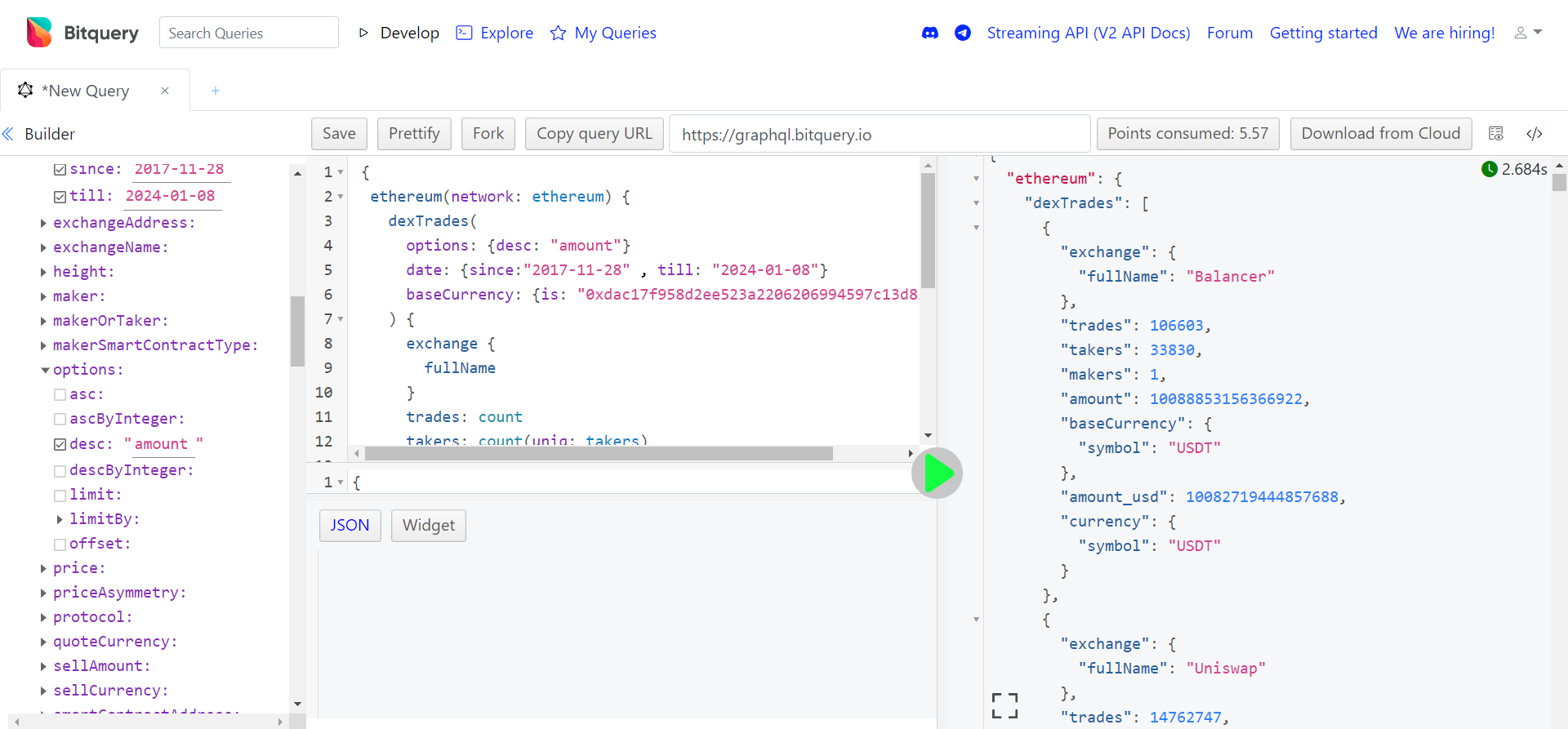
You can represent the fetched data in any format you want, here you can see UniSwap has the highest amount of USDT traded
Conclusion
Bitquery is a powerful tool that provides structured data from the blockchain space. It offers two main services: the Bitquery Explorer and the Bitquery API. By using these services, we can analyze USDT Token in various aspects and gain valuable insights into the token’s performance, activity, and trends.
Subscribe to my newsletter
Read articles from Degen HODLer directly inside your inbox. Subscribe to the newsletter, and don't miss out.
Written by

Degen HODLer
Degen HODLer
Passionate web3 enthusiast, dev looking to explore web3.